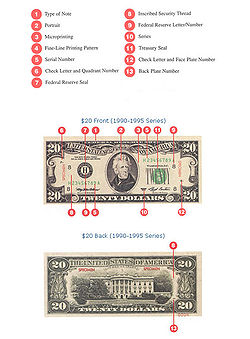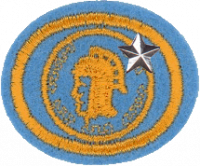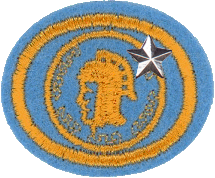Difference between revisions of "AY Honors/Currency - Advanced/Answer Key"
m |
|||
| (12 intermediate revisions by 2 users not shown) | |||
| Line 1: | Line 1: | ||
| − | + | {{HonorSubpage}} | |
| − | + | <section begin="Body" /> | |
| − | {{ | + | {{ansreq|page=AY Honors/Currency - Advanced|num=1}} |
| − | + | <noinclude><translate><!--T:30--> | |
| − | + | </noinclude><!-- instance 1 --> | |
| − | + | <!-- 1. Have the Currency (Coins) Honor. --> | |
| − | + | {{honor_prerequisite|honor=Currency}} | |
| − | |||
| − | |||
| − | |||
| − | }} | ||
| − | |||
| − | |||
| − | <section begin=" | ||
| − | {{ansreq|page=AY Honors/Currency - Advanced|num=1 | ||
| − | <noinclude><translate></noinclude><!-- instance 1 --> | ||
| − | <!-- 1. Have the Currency (Coins) Honor | ||
| − | {{honor_prerequisite | ||
<noinclude></translate></noinclude> | <noinclude></translate></noinclude> | ||
{{CloseReq}} <!-- 1 --> | {{CloseReq}} <!-- 1 --> | ||
{{ansreq|page={{#titleparts:{{PAGENAME}}|2|1}}|num=2|dispreq=2 [[File:Flag of the United States.svg|25px]]}} | {{ansreq|page={{#titleparts:{{PAGENAME}}|2|1}}|num=2|dispreq=2 [[File:Flag of the United States.svg|25px]]}} | ||
| − | <noinclude><translate></noinclude><!-- instance 1 --> | + | <noinclude><translate><!--T:31--> |
| − | <!-- 2. Select a coin or note from your collection and present an oral or written report on the historical or other significance of the person(s), place(s), item(s) or symbol(s) found on both sides. | + | </noinclude><!-- instance 1 --> |
| + | <!-- 2. Select a coin or note from your collection and present an oral or written report on the historical or other significance of the person(s), place(s), item(s) or symbol(s) found on both sides. --> | ||
<!--T:2--> | <!--T:2--> | ||
| Line 37: | Line 27: | ||
* [[W:Modern_United_States_commemorative_coins|Modern US Commemorative Coins]] | * [[W:Modern_United_States_commemorative_coins|Modern US Commemorative Coins]] | ||
| + | <!--T:32--> | ||
<noinclude></translate></noinclude> | <noinclude></translate></noinclude> | ||
{{CloseReq}} <!-- 2 --> | {{CloseReq}} <!-- 2 --> | ||
{{ansreq|page={{#titleparts:{{PAGENAME}}|2|1}}|num=3|dispreq=3 [[File:Flag of the United States.svg|25px]]}} | {{ansreq|page={{#titleparts:{{PAGENAME}}|2|1}}|num=3|dispreq=3 [[File:Flag of the United States.svg|25px]]}} | ||
| − | <noinclude><translate></noinclude><!-- instance 1 --> | + | <noinclude><translate><!--T:33--> |
| − | <!-- 3. What are the laws regarding counterfeiting in your country and what devices are used in your nation's currency to prevent it? | + | </noinclude><!-- instance 1 --> |
| + | <!-- 3. What are the laws regarding counterfeiting in your country and what devices are used in your nation's currency to prevent it? --> | ||
=== United States of America (Law) === <!--T:5--> | === United States of America (Law) === <!--T:5--> | ||
| Line 65: | Line 57: | ||
<!--T:12--> | <!--T:12--> | ||
[[Image:Dollarsecurity.jpg|right|250px|thumb|Anti-counterfeiting features on an old [[W:American twenty dollar bill|U.S. $20 bill]]]] | [[Image:Dollarsecurity.jpg|right|250px|thumb|Anti-counterfeiting features on an old [[W:American twenty dollar bill|U.S. $20 bill]]]] | ||
| − | Traditionally, anti-counterfeiting measures involved including fine detail with raised [[W:intaglio (printmaking)|intaglio]] printing on bills which would allow non-experts to easily spot forgeries. | + | Traditionally, anti-counterfeiting measures involved including fine detail with raised [[W:intaglio (printmaking)|intaglio]] printing on bills which would allow non-experts to easily spot forgeries. On coins, ''milled'' or ''reeded'' (marked with parallel grooves) edges are used to show that none of the valuable metal has been scraped off. This detects the ''shaving'' or ''[[W:Coin clipping|clipping]]'' (paring off) of the rim of the coin. However, it does not detect ''sweating'', or shaking coins in a bag and collecting the resulting dust. Since this technique removes a smaller amount, it is primarily used on the most valuable coins, such as gold. In early paper money in [[W:Colonial North America|Colonial North America]], one creative means of deterring counterfeiters was to print the impression of a leaf in the bill. Since the patterns found in a leaf were unique and complex, they were nearly impossible to reproduce.[http://www.librarycompany.org/BFWriter/images/large/3.7.jpg] |
<!--T:13--> | <!--T:13--> | ||
| − | In the late twentieth century advances in computer and photocopy technology made it possible for people without sophisticated training to easily copy currency. | + | In the late twentieth century advances in computer and photocopy technology made it possible for people without sophisticated training to easily copy currency. In response, national engraving bureaus began to include new more sophisticated anti-counterfeiting systems such as holograms, multi-colored bills, embedded devices such as strips, microprinting and inks whose colors changed depending on the angle of the light, and the use of design features such as the "[[W:EURion constellation|EURion constellation]]" which disables modern photocopiers. Software programs such as Adobe Photoshop have been modified by their manufacturers to obstruct manipulation of scanned images of banknotes.<ref>[http://www.adobe.com/products/photoshop/cds.html Photoshop and CDS]</ref> There also exist patches to counteract these measures. |
<!--T:14--> | <!--T:14--> | ||
| Line 83: | Line 75: | ||
<!--T:16--> | <!--T:16--> | ||
| − | The Treasury had made no plans to redesign the [[W:American five dollar bill|$5 bill]] using | + | The Treasury had made no plans to redesign the [[W:American five dollar bill|$5 bill]] using colors, but recently reversed its decision, after learning some counterfeiters were bleaching the ink off the bills and printing them as $100 bills. It is not known when the [[W:American hundred dollar bill|$100 bill]] will be redesigned in this format, but the new [[W:American ten dollar bill|$10 bill]] (the design of which was revealed in late 2005) entered circulation on March 2, 2006. The [[W:Federal Reserve note|$1 bill]] and [[W:United States Two dollar bill|$2 bill]] are seen by most counterfeiters as having too low of a value to counterfeit, and so they have not been redesigned as frequently as higher denominations. |
| − | |||
| − | |||
| − | |||
| − | |||
| − | |||
| − | |||
| − | |||
| − | |||
| − | |||
| + | <!--T:34--> | ||
<noinclude></translate></noinclude> | <noinclude></translate></noinclude> | ||
{{CloseReq}} <!-- 3 --> | {{CloseReq}} <!-- 3 --> | ||
{{ansreq|page={{#titleparts:{{PAGENAME}}|2|1}}|num=4}} | {{ansreq|page={{#titleparts:{{PAGENAME}}|2|1}}|num=4}} | ||
| − | <noinclude><translate></noinclude><!-- instance 1 --> | + | <noinclude><translate><!--T:35--> |
| − | <!-- 4. Attend a meeting of a local coin club and report on your experience. Possible items to consider: <br>a. Level of expertise of members as demonstrated by presentations and dialogues.<br>b. Average general age of attendees. <br>c. Ideas which might help the club extend its collector interest to a wider audience. <br>d. How newcomer friendly is the organization. <br>e. Suggestions on how these people might be reached with the gospel through a manner which they would find attractive. | + | </noinclude><!-- instance 1 --> |
| + | <!-- 4. Attend a meeting of a local coin club and report on your experience. Possible items to consider: <br>a. Level of expertise of members as demonstrated by presentations and dialogues.<br>b. Average general age of attendees. <br>c. Ideas which might help the club extend its collector interest to a wider audience. <br>d. How newcomer friendly is the organization. <br>e. Suggestions on how these people might be reached with the gospel through a manner which they would find attractive. --> | ||
<!--T:21--> | <!--T:21--> | ||
| Line 105: | Line 90: | ||
* [http://dir.groups.yahoo.com/dir/1600062367 Coin Collecting groups on Yahoo! Groups] | * [http://dir.groups.yahoo.com/dir/1600062367 Coin Collecting groups on Yahoo! Groups] | ||
| + | <!--T:36--> | ||
<noinclude></translate></noinclude> | <noinclude></translate></noinclude> | ||
{{CloseReq}} <!-- 4 --> | {{CloseReq}} <!-- 4 --> | ||
{{ansreq|page={{#titleparts:{{PAGENAME}}|2|1}}|num=5}} | {{ansreq|page={{#titleparts:{{PAGENAME}}|2|1}}|num=5}} | ||
| − | <noinclude><translate></noinclude><!-- instance 1 --> | + | <noinclude><translate><!--T:37--> |
| − | <!-- 5. Select one of the three categories of your collection as required under the Currency Honor requirements 7 and 8, and increase your collection to include twice the total number of specimens. | + | </noinclude><!-- instance 1 --> |
| + | <!-- 5. Select one of the three categories of your collection as required under the Currency Honor requirements 7 and 8, and increase your collection to include twice the total number of specimens. --> | ||
<!--T:23--> | <!--T:23--> | ||
''Requirements 7 & 8 reproduced below for simplicity'' | ''Requirements 7 & 8 reproduced below for simplicity'' | ||
| − | + | <!--T:24--> | |
| − | + | :<b>{{reqreq|page=AY Honors/Currency|num=7}}</b> | |
| − | |||
| − | |||
| − | |||
| − | |||
| − | |||
| − | |||
| − | |||
| − | + | <!--T:25--> | |
| − | + | :<b>{{reqreq|page=AY Honors/Currency|num=8}}</b> | |
| − | |||
| − | |||
| − | |||
| − | |||
| − | |||
| − | |||
| − | |||
| − | |||
| − | |||
| − | |||
| + | <!--T:38--> | ||
<noinclude></translate></noinclude> | <noinclude></translate></noinclude> | ||
{{CloseReq}} <!-- 5 --> | {{CloseReq}} <!-- 5 --> | ||
{{ansreq|page={{#titleparts:{{PAGENAME}}|2|1}}|num=6}} | {{ansreq|page={{#titleparts:{{PAGENAME}}|2|1}}|num=6}} | ||
| − | <noinclude><translate></noinclude><!-- instance 1 --> | + | <noinclude><translate><!--T:39--> |
| + | </noinclude><!-- instance 1 --> | ||
<!-- 6. Add to your collection at least one of the unusual (odd and curious) forms learned about in requirement 1 of the Currency Honor requirements and have in your Currency Honor files, at least a paragraph summarizing how, when and where this item was used as currency. --> | <!-- 6. Add to your collection at least one of the unusual (odd and curious) forms learned about in requirement 1 of the Currency Honor requirements and have in your Currency Honor files, at least a paragraph summarizing how, when and where this item was used as currency. --> | ||
| Line 151: | Line 123: | ||
in place of coins or currency. | in place of coins or currency. | ||
| + | <!--T:40--> | ||
<noinclude></translate></noinclude> | <noinclude></translate></noinclude> | ||
{{CloseReq}} <!-- 6 --> | {{CloseReq}} <!-- 6 --> | ||
| Line 156: | Line 129: | ||
==References== <!--T:29--> | ==References== <!--T:29--> | ||
{{reflist}} | {{reflist}} | ||
| − | |||
| − | |||
<noinclude></translate></noinclude> | <noinclude></translate></noinclude> | ||
| + | |||
| + | [[Category:AY Honors/noindex{{GetLangSuffix}}|{{SUBPAGENAME}}]] | ||
| + | [[Category:AY Honors/Secondary{{GetLangSuffix}}]] | ||
| + | |||
| + | <section end="Body" /> | ||
| + | {{CloseHonorPage}} | ||
Latest revision as of 14:35, 2 January 2023
1
For tips and instruction see Currency.
Suggestions:
- Golden Dollar
- John F. Kennedy
- Washington Quarter
- Roosevelt dime
- Lincoln cent
- Susan B. Anthony dollar
- US Bicentennial Coins
- Presidential Coin Act and First Spouse Program
United States of America (Law)
- Manufacturing counterfeit United States currency or altering genuine currency to increase its value is a violation of Title 18, Section 471 of the United States Code and is punishable by a fine or imprisonment for up to 15 years, or both.
- Possession of counterfeit United States obligations with fraudulent intent is a violation of Title 18, Section 472 of the United States Code and is punishable by a fine or imprisonment for up to 15 years, or both.
- Anyone who manufactures a counterfeit U.S. coin in any denomination above five cents is subject to the same penalties as all other counterfeiters. Anyone who alters a genuine coin to increase its numismatic value is in violation of Title 18, Section 331 of the United States Code, which is punishable by a fine or imprisonment for up to five years, or both.
- Forging, altering, or trafficking in United States Government checks, bonds or other obligations is a violation of Title 18, Section 510 of the United States Code and is punishable by a fine or imprisonment for up to 10 years, or both.
- Printed reproductions, including photographs of paper currency, checks, bonds, postage stamps, revenue stamps, and securities of the United States and foreign governments (except under the conditions previously listed) are violations of Title 18, Section 474 of the United States Code. Violations are punishable by a fine or imprisonment for up to 15 years, or both.
Anti-counterfeiting measures
Selection from Wikipedia

Traditionally, anti-counterfeiting measures involved including fine detail with raised intaglio printing on bills which would allow non-experts to easily spot forgeries. On coins, milled or reeded (marked with parallel grooves) edges are used to show that none of the valuable metal has been scraped off. This detects the shaving or clipping (paring off) of the rim of the coin. However, it does not detect sweating, or shaking coins in a bag and collecting the resulting dust. Since this technique removes a smaller amount, it is primarily used on the most valuable coins, such as gold. In early paper money in Colonial North America, one creative means of deterring counterfeiters was to print the impression of a leaf in the bill. Since the patterns found in a leaf were unique and complex, they were nearly impossible to reproduce.[1]
In the late twentieth century advances in computer and photocopy technology made it possible for people without sophisticated training to easily copy currency. In response, national engraving bureaus began to include new more sophisticated anti-counterfeiting systems such as holograms, multi-colored bills, embedded devices such as strips, microprinting and inks whose colors changed depending on the angle of the light, and the use of design features such as the "EURion constellation" which disables modern photocopiers. Software programs such as Adobe Photoshop have been modified by their manufacturers to obstruct manipulation of scanned images of banknotes.& There also exist patches to counteract these measures.
For U.S. currency, anti-counterfeiting milestones are as follows:
- 1996 $100 bill gets a new design with a larger portrait
- 1997 $50 bill copies the design used above
- 1998 $20 bill copies the design used above
- 2000 $10 bill and $5 bill copies the design used above
- 2003 $20 bill gets a new design with no oval around Andrew Jackson's portrait and more colors
- 2004 $50 bill copies the design used above
- 2006 $10 bill copies the design used above
The Treasury had made no plans to redesign the $5 bill using colors, but recently reversed its decision, after learning some counterfeiters were bleaching the ink off the bills and printing them as $100 bills. It is not known when the $100 bill will be redesigned in this format, but the new $10 bill (the design of which was revealed in late 2005) entered circulation on March 2, 2006. The $1 bill and $2 bill are seen by most counterfeiters as having too low of a value to counterfeit, and so they have not been redesigned as frequently as higher denominations.
4
- a. Level of expertise of members as demonstrated by presentations and dialogues.
- b. Average general age of attendees.
- c. Ideas which might help the club extend its collector interest to a wider audience.
- d. How newcomer friendly is the organization.
- e. Suggestions on how these people might be reached with the gospel through a manner which they would find attractive.
5
Requirements 7 & 8 reproduced below for simplicity
- 7. Collect and mount a type set of coins from your country of any date currently being minted or in circulation. Proof, commemorative, rare, silver, or expensive coins are not needed.
- 8. Do two of the following:
6
Requirement 1 reproduced below for simplicity
Requirement 1. Relate briefly the story of barter, showing three reasons why money
came into being and naming at least ten strange forms of money used
in place of coins or currency.
References


